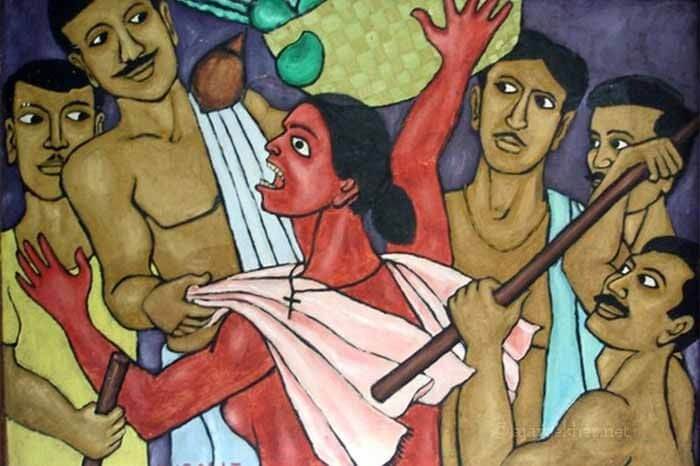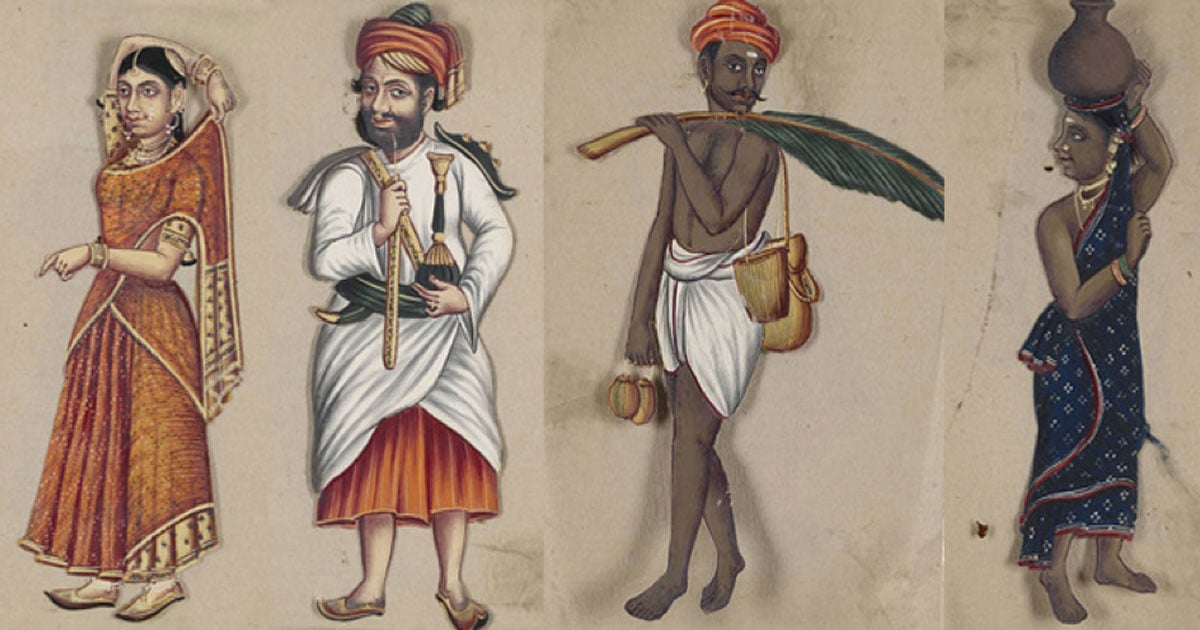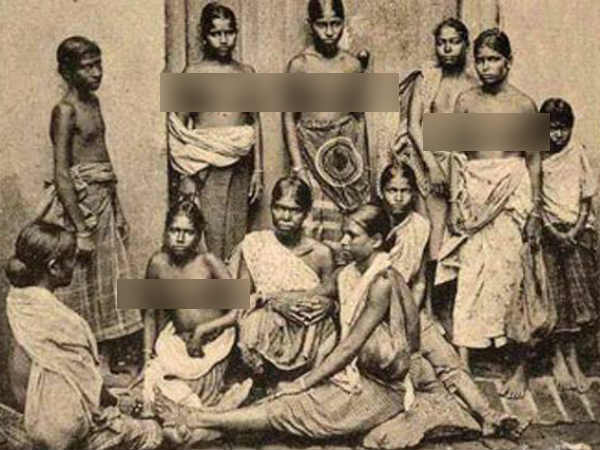
White girls have Gloria Steinem. Black girls have Rosa Parks. Who do we have?
Growing up, one of the few prominent Tamil feminist activists I was exposed to was a male, Bharathiyar (1882-1921). He was a renowned liberal feminist in South India who believed that Tamil women’s liberation could only be achieved through political reform. Through poetry and literature, Bharathiyar not only criticized misogyny, but the caste system, and religion.
As an intersectional feminist, social visionary, and freedom fighter with views considered to be contemporary even in present day, Bharathiyar was nothing short of a revolutionary. Even more so because he was a male feminist, something unheard of during his time.
Bharathiyar’s most notable poem is one in which he describes a Pudhumai Penn (modern woman). With her head held high, a pudhumai penn boldly and with unwavering integrity walks the world. Decades before Bharathiyar wrote this poem envisioning a liberated and modern Tamil woman, lived Nangeli, who as a low-caste Tamil woman in the 19th century, embodied that very spirit. Despite the prevalent and deeply rooted patriarchy of a Tamil society, Nangeli overcame a series of adversities as a result of discrimination based on her caste, wealth, socioeconomic status, as well as sex. Nangeli’s story is the focal point of this piece. However, before sharing Nangeli’s epic tale, I will begin by providing context into the origins of South Asia’s caste system.
Dating back 3,000 years, the Hindu caste system is thought to be one of the world’s longest-lasting forms of social hierarchy. The caste system is based on the Hindu principles of Karma, meaning “work,” and Dharma, meaning “duty.” Originally, Hindus were divided into the four main castes - Brahmin, Kshatriya, Vaishya, and Shudra. Each caste was believed to have originated from Brahma, the Hindu god of creation.
Brahma’s head, Brahmins, were considered to be the teachers and intellectuals of society. Kshatriyas, the warriors and rulers within society, were thought to be reincarnations of his arms and legs. Vaishyas, the traders, were Brahma’s thighs, while Shudras, those responsible for menial work within society, were his feet. Tamils’ caste structure has deeper religious roots than is the case for similar hierarchies found in other cultures. In Sri Lanka, Tamils’ caste system originates from the Brahmin dominated system of South India. An extensive study conducted by the US National Library of Medicine uses genetic evidence to research the origins of the caste system among various Indian caste populations. The study finds that the numerous influxes of immigration into India have dramatically altered the genetic structure of each Indian caste population. In the most recent wave, Indo-European individuals emigrated from West Eurasia and entered the Northwest territories of India. Following their entry, they dispersed throughout the region.
Tamils’ caste structure has deeper religious roots than is the case for similar hierarchies found in other cultures. In Sri Lanka, Tamils’ caste system originates from the Brahmin dominated system of South India. An extensive study conducted by the US National Library of Medicine uses genetic evidence to research the origins of the caste system among various Indian caste populations. The study finds that the numerous influxes of immigration into India have dramatically altered the genetic structure of each Indian caste population. In the most recent wave, Indo-European individuals emigrated from West Eurasia and entered the Northwest territories of India. Following their entry, they dispersed throughout the region.
In order to evaluate the impact of West Eurasians on India’s contemporary caste system, researchers compared mtDNA and Y-chromosome variations among 265 males belonging to eight different castes, all of whom drastically differed in ranking. The list of respondents also consisted of 750 individuals of African, Asian, and European descent. When analyzing maternally inherited mtDNA, researchers found that regardless of ranking, each caste appears to be of majority Asian descent.
Conversely, in regards to paternally inherited Y-chromosome variations, all castes hold stronger European rather than Asian ties. 20%-30% of Indian mtDNA haplotypes are inherited from West Eurasian haplogroups. The concentration of these haplotypes is proportional to one’s caste rank, with the highest frequency of West Eurasian haplotypes being found within those of upper castes. Comparatively, the upper castes appear to have greater genetic commonalities with Europeans, specifically Eastern Europeans.
Interestingly, this research indicates a way in which past European colonization continues to systematically marginalize and disunite POC today, serving as a testament to the colonial mindset that prevails among the Tamil community. Religion laid the foundation for the caste system. However, it was a variety of social factors such as immigration patterns, ancestry, as well as socioeconomics that shaped the caste system into what it is today.
In present-day society, caste-based discrimination and prejudice is commonplace in many parts of the world. For second generation Tamil immigrants, hearing parents and the elderly inquire in a needlessly passionate manner about a fellow Tamil’s oor (native village), as means to decipher their caste, is typical.
Ironically however, over the course of a quarter-century long war, the authoritarian state of Sri Lanka saw no caste, skin colour, class, or gender as it attempted to ethnically purge itself of its indigenous Tamil population. Tamils remained divided under class structures, caste and religion, but the army was indiscriminate in its genocide.

As the brutal war raged on, many Tamils chose to unify under their unique cultural identity rather than the caste-based hierarchy, and Eelam Tamils’ piety towards this social construct seemed to weaken. Historically, social groups of all creeds possess a cannibalistic tendency to break apart based on perceived differences - Tamils are not immune to this phenomenon.
Likewise, it comes as no surprise that years later, caste-based prejudice remains prevalent among the Tamil diaspora, even in North America. Reverence to caste is just as deeply entrenched in Tamil culture as is hospitality and honor. Accordingly, it isn’t difficult to imagine the extent to which caste and sex played a role in dictating the legal system of the South Indian Tamil empire during the 19th century.
A multi-generational saga dating back to 1803, of an Ezhava woman Nangeli, as she resists the Brahmanic patriarchy of an Indian society, graphically depicts the consequences of the intrinsically oppressive caste system. Legend has it that Nangeli belonged to the low-caste Ezhava community in Alappuzha, Kerala. In the 1800s, in order to ensure the subjugation of particular social groups, Kings required that members of lower castes pay an inequitable and burdensome sum of tax. The taxes were enforced for a variety of reasons. Absurdly, one tax was imposed on low-caste men who wished to maintain a mustache.
One of the most degrading forms of these taxes was one that low-caste women were required to pay in order to exercise the right to cover their breasts. Low-caste women without the financial means to pay this tax were forced to walk about, with a publicly exposed chest. This objectifying practice served to humiliate low-caste women into demonstrating submission and modesty towards the upper classes, particularly males of an upper caste. Of course, a side benefit of this tax was that it provided the gawking eyes of perverted men with eye candy.

Nangeli’s unyielding nature as well as her poverty-stricken plight led her to practice civil disobedience as she refused to pay the fee while continuing to cover her breasts. Word of her rebellion traveled quickly, and soon the tax collector was at her doorstep. As per her pre-constructed plan, Nangeli laid out a banana leaf, on which the collector presumed she would place for him a meal of rice. In lieu of rice, he was presented with something far less appetizing. With a pre-sharpened sickle, as a graphic display of resistance, Nangeli slashed off both her breasts and laid them on the leaf.
The tax collector fled the scene aghast, and Chirukandan, Nangeli’s loving husband, came home to find her lifeless body lying in a pool of blood. Succumbing to his sorrow, Chirukandan put an end to his life by jumping into her funeral pyre. This became the first recorded instance of a man committing sati. The story of Nangeli’s death spread far, sparking a much-needed countermovement, which eventually led to the discontinuation of the infamous breast tax in Kerala. Without having been formally noted in literature, Nangeli’s story remains alive today, solely through the word of mouth among locals. Historians and readers alike may remain skeptical of the authenticity of this passed-down story. However, it is undoubtedly true that intersectional feminist figures of colour, like Nangeli, must be given a greater spotlight in our community.
____________________________________________________________
Sources:
Bamshad, Michael et al. “Genetic Evidence on the Origins of Indian Caste Populations.” Genome Research 11.6 (2001): 994–1004. PMC. Web. 29 Dec. 2017.
"Tamil Caste System.” Lanka Library, Library of Congress, www.lankalibrary.com/cul/jaffna_castes.htm.
“The woman who cut off her breasts to protest a tax.” BBC News, BBC, 28 July 2016, www.bbc.com/news/world-asia-india-36891356.
“What is India's caste system?” BBC News, BBC, 20 July 2017, www.bbc.com/news/world-asia-india-35650616.
Related articles: Casted Away: Ending Discrimination Clash of Love & Caste Check Your Caste Privilege MS Subbulakshmi and the Modern Indian Feminine Ideal History Hidden in Plain Sight: Remembering #BlackJuly, 31 Years Later

























